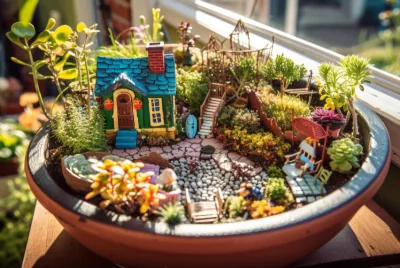How to Start Balcony Gardening: Tips for Gardening Beginners
As an avid gardening enthusiast, I believe that anyone can experience the joys of gardening, even in a limited space like a balcony. Balcony gardening not only allows you to connect with nature in an urban setting but also offers numerous benefits. In this article, I will share my expert tips and suggestions for beginners looking to embark on their balcony gardening journey. Let’s dive in and discover the wonders of harvesting vegetable crops right outside your door.
Introduction
Imagine stepping out onto your balcony and being greeted by lush greenery, colorful blooms, and the fresh scent of herbs. Balcony gardening opens up a world of possibilities, allowing you to transform your small outdoor space into a thriving garden. Whether you have a spacious balcony or a cozy nook, with the right knowledge and approach, you can create a beautiful and productive garden that brings joy and fulfillment.
Benefits of Balcony Gardening
- Connecting with nature in an urban setting: Living in a city doesn’t mean you have to sacrifice your connection with nature. Balcony gardening provides an opportunity to immerse yourself in the beauty of plants, enjoy the calming effects of greenery, and experience the wonders of the natural world.
- Enhancing the aesthetics of your balcony: A well-designed balcony garden adds a touch of beauty and charm to your living space. The vibrant colors of flowers, the lush foliage, and the gentle rustling of leaves create a serene and inviting atmosphere.
- Growing your own herbs and vegetables: Imagine plucking fresh herbs like basil, mint, or rosemary straight from your balcony garden to add a burst of flavor to your culinary creations. Balcony gardening allows you to grow your own organic herbs and vegetables, providing you with a source of fresh, nutritious produce.
Choosing the Right Plants
Before you start balcony gardening, it’s important to choose the right plants that will thrive in your specific conditions. Consider the following factors:
- Considerations for balcony gardening: Assess the amount of sunlight your balcony receives, the exposure to wind or shade, and the space available for your plants.
- Selecting plants based on sunlight exposure: Determine whether your balcony receives full sun, partial sun, or mostly shade. This will help you select plants that can adapt to the available light conditions.
- Opting for container-friendly varieties: Look for plants that are well-suited for container gardening. Choose compact varieties or those specifically bred for growing in pots and containers.
Preparing the Balcony
Once you’ve chosen the right plants, it’s time to prepare your balcony for gardening. Follow these steps:
- Assessing the available space: Take a careful look at your balcony and determine how much space you have for your garden. Consider the size and weight limitations, as well as any regulations or restrictions imposed by your building.
- Ensuring proper drainage: Good drainage is crucial for the health of your plants. Ensure that your containers have drainage holes and use saucers to collect excess water.
- Selecting suitable containers: Choose containers that are appropriate for your plants and balcony size. Opt for lightweight, durable materials such as plastic, fiberglass, or lightweight pottery.
Soil and Fertilizer
To give your plants the best start, pay attention to the soil and fertilizer you use:
- Using high-quality potting soil: Invest in a good quality potting soil that is well-draining and nutrient-rich. Avoid using garden soil, as it may not provide the necessary drainage and aeration.
- Incorporating organic matter: Enhance the fertility and moisture-retaining capacity of your soil by adding organic matter such as compost, well-rotted manure, or coconut coir.
- Choosing appropriate fertilizers: Use slow-release or organic fertilizers to provide a steady supply of nutrients to your plants. Follow the instructions on the fertilizer package and avoid over-fertilizing, as it can lead to plant burn.
Watering and Maintenance
Proper watering and maintenance are vital for the success of your balcony garden. Follow these guidelines:
- Establishing a watering routine: Balcony gardens often dry out faster than traditional gardens, so establish a regular watering routine. Check the moisture level of the soil and water your plants when the top inch feels dry.
- Monitoring moisture levels: Pay attention to the moisture needs of your plants. Some plants prefer slightly drier conditions, while others require consistent moisture. Adjust your watering frequency accordingly.
- Pruning and grooming plants: Regularly prune and groom your plants to maintain their shape, promote healthy growth, and remove any dead or damaged parts. Pinch back leggy growth to encourage bushiness.
Maximizing Space
In a limited balcony space, maximizing every inch is essential. Try these techniques:
- Vertical gardening techniques: Make use of vertical space by growing climbing plants, utilizing trellises, or installing vertical gardening systems. This allows you to grow more plants without taking up valuable floor space.
- Utilizing hanging baskets and trellises: Hang baskets filled with trailing plants to create a cascading effect. Use trellises to support vining plants and add visual interest to your balcony.
- Companion planting for space optimization: Combine plants that have compatible growth habits to make the most of your available space. For example, plant shallow-rooted herbs alongside deeper-rooted vegetables.
Pest Control
Pests can be a challenge in any garden, including balcony gardens. Here’s how to handle them:
- Identifying common pests: Learn to identify common pests that may affect your plants. Keep an eye out for aphids, spider mites, mealybugs, and snails.
- Implementing organic pest control methods: Use organic pest control methods such as hand-picking pests, spraying with insecticidal soap, or using homemade natural repellents like neem oil.
- Encouraging beneficial insects: Attract beneficial insects like ladybugs, lacewings, and hoverflies to your balcony garden. They can help control pest populations naturally.
Harvesting and Enjoying
One of the most rewarding aspects of balcony gardening is enjoying the fruits of your labor. Here’s how:
- Knowing when to harvest: Learn the proper harvesting time for each plant. Harvest herbs when they have enough foliage to sustain growth and vegetables when they reach their mature size.
- Using homegrown herbs and vegetables: Incorporate your homegrown herbs and vegetables into your meals to savor their freshness and flavor. Experiment with different recipes and enjoy the satisfaction of cooking with your own produce.
- Creating a cozy space for relaxation: Design your balcony garden with a cozy seating area where you can relax, read a book, or simply enjoy the tranquil ambiance. Use comfortable outdoor furniture, add some decorative elements, and surround yourself with the beauty of nature.
Conclusion
Embarking on a balcony gardening journey is an exciting endeavor that allows you to cultivate your own green oasis in a limited space. By following the tips and suggestions provided in this article, you’ll be well-equipped to start your balcony garden and experience the joys of nurturing plants, growing your own herbs and vegetables, and creating a serene sanctuary right outside your door.
Remember to choose the right plants for your specific conditions, prepare your balcony appropriately, provide proper soil and fertilization, establish a watering routine, maximize space through vertical gardening techniques, manage pests organically, and savor the fruits of your labor. So, unleash your creativity, embrace nature, and let your balcony transform into a flourishing garden filled with beauty and abundance.
FAQs
1. How much sunlight does a balcony garden need?
The amount of sunlight required depends on the plants you choose. Most vegetables and flowering plants need at least 6 hours of direct sunlight per day, while some herbs and leafy greens can tolerate partial shade.
2. Can I grow fruit trees on a balcony?
Certain fruit trees, such as dwarf varieties, can be grown on a balcony. Look for compact trees suitable for container gardening and consider factors like available space, sunlight, and the root system requirements of the specific tree.
3. How often should I fertilize my balcony garden?
The frequency of fertilization depends on the type of plants and the fertilizer used. Generally, applying a slow-release or organic fertilizer every 4-6 weeks during the growing season is sufficient. Always follow the instructions on the fertilizer package.
4. How can I prevent pests in my balcony garden?
To prevent pests, maintain good garden hygiene by regularly removing dead leaves and debris. Monitor your plants for signs of pests and take immediate action if you notice any infestations. Encourage beneficial insects and consider using natural pest control methods.
5. Can I grow plants without direct sunlight on my balcony?
Yes, there are many plants that can thrive in partial shade or filtered sunlight. Leafy greens, herbs like parsley and mint, and some ferns are suitable for balconies with limited direct sunlight. Be sure to check the light requirements of each plant before choosing.





